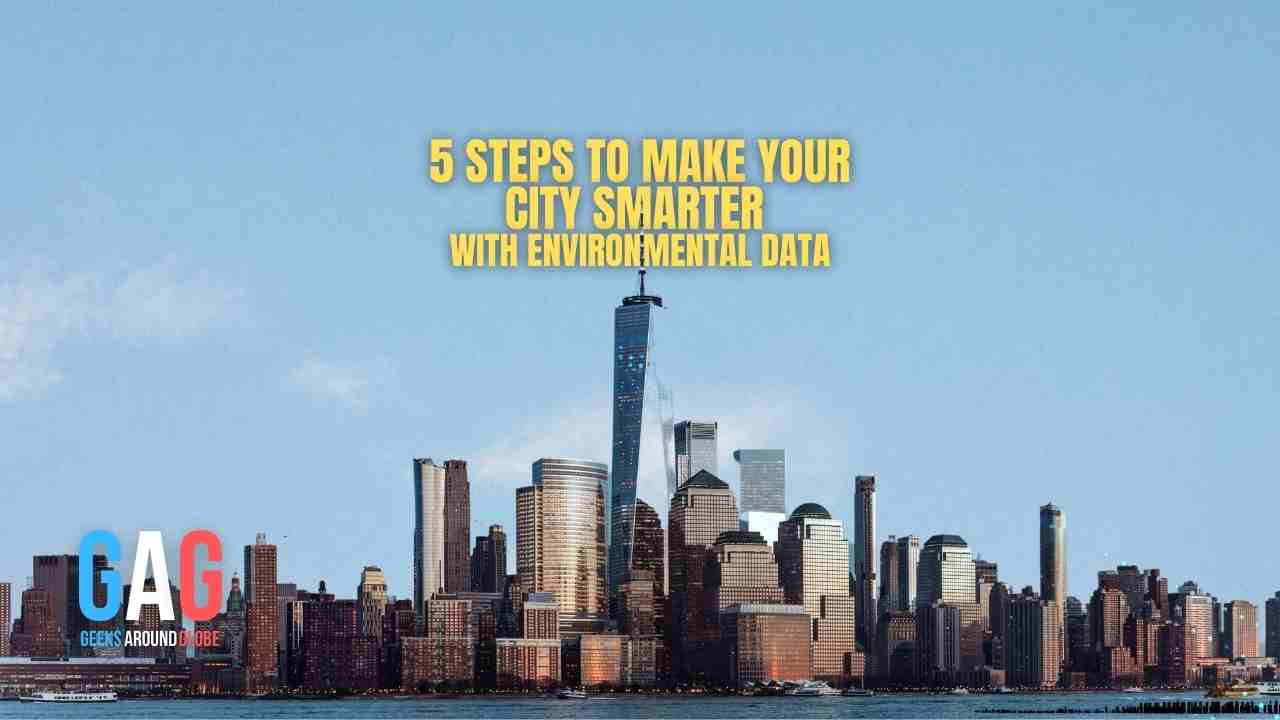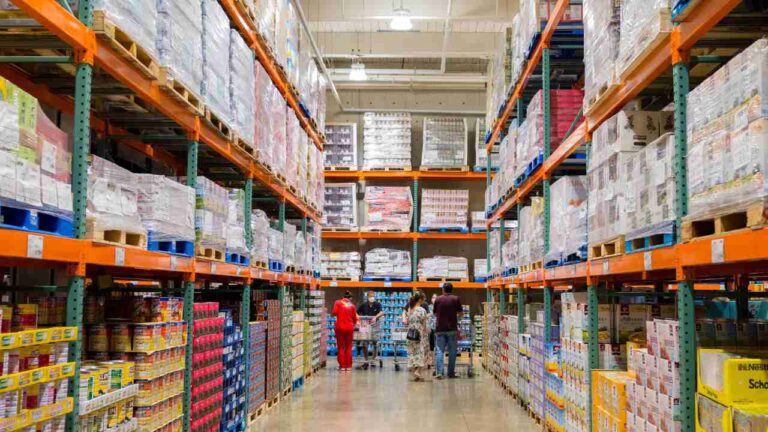- 1. Introduction
- 2. 1. Reduce Carbon Emissions
- 3. 2. Support Energy Efficiency
- 4. 3. Improve Urban Solid Waste Management
- 5. 4. Real-time Monitoring and Management of Energy and Environment
- 6. 5. Smart Cities Can Spark Citizen Engagement
- 7. How Does This Idea Work?
- 8. Environmental Data for Cities Across the World
- 9. Accurate Data for The Planet’s Most Volatile Variable
- 10. Real-time
- 11. Density and Resolution of Data
- 12. Productive
- 13. Developer-friendly
- 14. What Role Does Air Quality Data Play in Improving Insurance Underwriting?
Introduction
People who live in and around cities are directly affected by urban air pollution. 1.3 million people die due to outdoor air pollution in metropolitan areas worldwide every year. Healthy individuals, a sustainable environment, productive enterprises, and a flourishing economy are just a few aspects of addressing this problem. The first step toward a healthier, happier city is to raise awareness about the need for decent quality. Here are five simple measures to improve your city’s air quality. Our cities are using rising quantities of natural resources while producing increasing amounts of garbage and pollution all around the globe. This results in contamination of the air and water, with global effects.
The notion of smart cities is still evolving in many ways, but one of the most important features that these cities should have is environmental sustainability. It implies that we may begin building cities better suited to meet today’s urban concerns that have a detrimental effect on the environment using sophisticated technologies.
1. Reduce Carbon Emissions
Traffic contributes significantly to global warming by emitting carbon dioxide. Smart cities may help minimize carbon emissions by embracing smart transportation choices so that inhabitants are less reliant on privately owned automobiles for mobility.
Here are a few examples:
Smart bike-riding services enable customers to use an app on their phones to unlock specialized bikes distributed across the city.
Sharing a smart ride: Vehicles that are self-driving and autonomous use less fuel.
2. Support Energy Efficiency
Greater energy usage resulted in more energy demand and increased pollution and heat output in cities. With the advancement of technology, this might alter for the better.
Energy efficiency options in a smart city come in various shapes and sizes.
The purpose of these technologies, in general, is to guarantee that resources are only utilized when they are required.
Smart LED Street lights, for example, lasted longer and used less energy to run. Furthermore, depending on the location and time of day, they may be muted or brightened to maintain efficiency without jeopardizing safety.
When there is little activity on the street, some smart lights may switch off.
Another method smart cities may save energy is by using energy-efficient IoT devices such as GPS, cameras, and traffic signal coordination systems to govern traffic.
3. Improve Urban Solid Waste Management
The environment has a tremendous capability for self-cleaning and healing, but our way of life puts an undue strain on it.
According to Synova, we create an incredible 3.6 million tons of municipal solid trash per day, much more than our world can tolerate, yet we don’t manage it well enough.
Using technology to improve municipal activities, such as rubbish collection, may reduce the amount of stress we put on the environment.
Smart trash management is becoming a reality. Smart sensors, for example, are used in the Big Belly solar-powered garbage compactors to determine when to begin compacting.
Furthermore, the containers use the cloud to communicate with the local waste management agency when they need to be emptied. Garbage trucks’ activity is reduced, lowering their carbon footprint and hazardous pollutants.
4. Real-time Monitoring and Management of Energy and Environment
Smart cities employ 21st-century technology, such as Logic Ladder’s unique cloud platform, to solve 21st-century challenges.
The system collects energy and environmental data using modern technologies such as Internet of Things (IoT) connection, big data, machine learning, and analytics, including air pollution levels, water waste, renewable energy performance, and solid waste measures.
Sensors and cameras are put at strategic locations across the city, such as on solar panels on top of buildings or waste bins. City authorities and individuals alike may access and utilize this data to make more informed, conscientious choices and uncover new possibilities, resulting in better air quality, less energy use, and a cleaner city.
5. Smart Cities Can Spark Citizen Engagement
Whether we want to accept it or not, human conduct — how we choose to live — is at the root of many current environmental issues. And in many circumstances, it’s an issue of ignorance or failure to recognize that a problem or a solution exists. Connecting urban citizens with environmental concerns that impact them is one of the amazing ways that smart city technology may be employed.
How Does This Idea Work?
It’s all about sharing knowledge that may lead to behavioral change at its heart. The Rubbish Track initiative, for example, allowed individuals to identify and track their trash as it made its way through the sanitation system. The idea was to urge individuals to make more environmentally conscious choices regarding what they ate and how they disposed of their trash. Citizen participation is critical to any city’s attempts to lessen its environmental footprint, and technology-enabled programs like canto raise awareness and effect change.
Environmental Data for Cities Across the World
Governments, corporations, and entrepreneurs are all trying to make the environment safer and cleaner. Ambee, a Bengaluru-based environmental intelligence firm, is one of them.
Ambee is a worldwide climate intelligence company that generates real-time hyperlocal climate data and information. It uses proprietary data science to give location-specific, real-time information and actions on on-air quality, pollen, weather data, and other environmental challenges.
APIs those are easy to use and provide the highest resolution for the whole world
We combine various ground sensors, satellite data, and the power of optimization algorithms and AI to provide air, weather, soil, pollen, water vapor, and fire data a whole new perspective. Vapor data immediately impacts various industries that depend on creating a better world for sustainable companies, livable communities, and scaled economies, contributing to a healthier planet, people, and overall productivity.
Accurate Data for The Planet’s Most Volatile Variable
The amount of pollution in the air varies greatly from one street to the next. Ambee’s APIs bring together the best of machine learning and atmospheric science to provide the greatest spatial resolution and most accurate dataset possible.
Real-time
Our data is the most up-to-date, with a street-by-street measurement for the whole globe and a difference of fewer than 300 meters.
Density and Resolution of Data
Global data for nearly 100 countries, with the highest resolution of up to 30 meters.
Correlation and regression are performed on the valuable data. Air quality data in real data awareness of the real-time then, time the customer-centric companies, and contribute to developing solutions to help humans breathe cleaner air. Data on hyperlocal air quality provides critical insights into how our environment responds to a variety of various tors.
Productive
Historical what various been examined and may be used to provide recommendations, advice, notifications, and alerts to help people live healthier lives. For developers, data has been examined by developers acquainted with the needs. Our real-time air quality data insights are easy to incorporate into any app, website, or widget since we use standard data formats.
Developer-friendly
Weather data from the past has been meticulously kept and may be used for study and documentation. The following goods are now available in our API Store: Pollen allergy monitoring throughout the season. Because of increasingly drier climates, greater pollution, and earlier seasons, formal seasonal allergies are becoming more difficult to forecast.
For those with asthma and other respiratory disorders, pollen monitoring is essential. Pollen data is tools that may help people develop habits that will enable them to limit pollen exposure and avoid exacerbating their seasonal allergies.
Related Blog: Ambee: Reliable Localized Environmental Data for Cities Across The World
What Role Does Air Quality Data Play in Improving Insurance Underwriting?
Environmental intelligence integrates environmental and sustainability research with real-time data on pollen counts, air quality, weather, and other elements.
With each passing year, deteriorating environmental challenges have substantially influenced global well-being. One of these difficulties is pollution, which impacts pollution levels and weather patterns, but it is not the only one. 7 million fatalities and billions in lost productivity are attributed to air pollution. Our everyday lives are harmed by low air quality mixed with unsavory conditions.
When a storm or wildfire damages a house or hospital, the expenses of pollution-related diseases mount, and many people turn to health insurance for routine claims only after the harm has been done. This is where environmental intelligence can assist with seamless data-driven decision-making, resulting in increased customer engagement, contentment, and retention.







